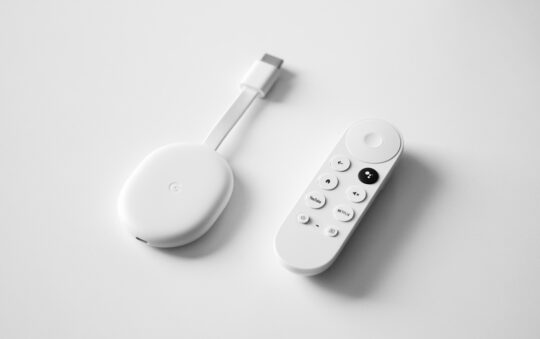With the right (inexpensive) equipment, you can use the AC wires in your walls to transmit data along with electricity.
by Joseph Moran
Few of us are fortunate enough to have homes wired for Ethernet, but unless you happen to live in an igloo or a thatch hut, you do have AC power wiring. With the right equipment, you can use those wires to transmit data along with electricity.
Using AC wiring for data networking is called powerline networking, and there are several different flavors of the technology to choose from. Most of them are based on standards put forth by the HomePlug Powerline Alliance, an industry certification group. There’s the original 14 Mbps HomePlug 1.0 standard, a follow-on specification dubbed “HomePlug with Turbo” that bumps throughput to 85 Mbps, and HomePlug AV, which promises enough performance (200 Mbps) to stream high-definition video. There’s also a competing 200 Mbps powerline specification from a group called the Universal Powerline Association (UPA) that’s popular outside North America, though Netgear sells a product based upon it here in the U.S.
Regardless of the specification used, powerline networking products are easy to install and pretty much all work the same way. You’ll need a minimum of two powerline adapters (which cost between $50-$100 depending on vendor and technology employed) — one for the device you want to network and another for your router. After you plug a powerline adapter into a wall outlet, you connect it to the Ethernet port of your router, computer, printer and so on.
Why Wired?
I know what you’re thinking “Wired networks are so 1990’s — we have WLANs now. Why does anyone need powerline networking when WLAN equipment is so ubiquitous?” The most logical example is to extend your network to a back room, high/low floor or any area where wireless signals just don’t reach. Today’s more advanced wireless networking protocols and antenna technologies make this less of a problem than it once was, but wireless reception problems are still common enough that powerline is a useful complement to a WLAN. You don’t necessarily need a palatial home to have wireless signal problems — a friend of mine became a candidate for a powerline network when we realized that a fully mirrored wall was wreaking havoc with wireless signals.
Powerline networking can be an especially good choice for Internet-connected devices like game consoles and digital video recorders, since entertainment centers tend to be enclosed and filled with lots of potential interference-generating equipment. Wireless adapters need altitude to get the best signal, so stuffing one on a low shelf behind the Xbox isn’t always the best approach — you may not even have enough clearance to make the antenna fully vertical.
What’s That Term? Not sure what a particular term means? Check out the searchable PracticallyNetworked Glossary. |
Another nice thing about powerline connections — especially when it comes to streaming media — is that although their performance can fluctuate (as you’ll see in a moment) they tend to deliver more consistent level of throughput than wireless ones. Compare that to when your wireless signal strength drops like a stone, and all you did was shut the bedroom door.
Actual Performance May Vary
But powerline networking isn’t always a panacea for wireless woes. Since it uses a wired medium you might think that it’s not subject to the performance vagaries that can plague wireless connections, but there are still external factors that can affect the performance.
For starters, the cardinal rule of powerline networking is that you never plug a powerline adapter into an uninterruptible power supply (UPS) or surge suppressor. These devices perform line conditioning that can interfere with the signals that transfer data, preventing a connection or making it slow or erratic. You should also avoid using powerline adapters on the same circuit with devices that draw a lot of current — like, irons, vacuum cleaners, or microwave ovens. If co-mingling them is unavoidable, expect a temporary performance drop or broken connection while those devices are in use.
Even absent these interference sources, getting the best performance out of powerline devices may take some trial and error, and you may find you get better speed from one pair of electrical outlets than another for no apparent reason.
Generally speaking, powerline technology should work acceptably in any reasonably modern home (say, built within the last several decades) or an older home with a newer electrical system), but even new homes aren’t immune to problems. Case in point: in my house (built in 2002) none of the outlets near my bedroom TiVo could muster anything better than a fair-to-poor powerline connection. Then one day, the connection just stopped working altogether. (Running the vacuum cleaner off any of these outlets consistently trips the circuit breaker, which is probably another symptom of some sort of electrical wiring problem.)
As with any other networking technology, the actual throughput you get with powerline networking products won’t be anything close to the performance figure you see on the box. In a best-case scenario, you should expect to see between 40 percent-60 percent of the quoted speed.
Security Begins at Home
Powerline networks are inherently more secure than wireless ones because they don’t use the air as a transmission medium. But security is still important because just as with WLANs, your data doesn’t necessarily stay within the confines of your home or office. That’s because the signals used for powerline data transmission go past the electrical grid’s gateway to your home the circuit breaker box — and travel all the way out to the transformer. A single transformer is often used by several households, and not just in apartment buildings or attached homes (in my neighborhood, it’s two houses per).
Therefore, unless you want your neighbor to be able to tap into your network you should enable encryption on your powerline adapters (most support either 56- or 128-bit encryption). To set up a secure connection, you basically create a password for your network and then apply it to specific powerline devices that you select using a hard-coded device ID similar to a MAC address. Once a device is associated with that password, data is encrypted and exchanged only with devices that have the same password.
Although they don’t usualy get as much press as wireless offerings, just about all the major consumer/small office networking vendors from Actiontec to ZyXEL offer powerline-based products, so they’re easy to find if you look for them. Although you can usually get devices based on different powerline standards to co-exist on the same network, for best results the devices you set up should all use the same standard.
Even if you don’t need powerline networking, it may be coming to your home soon enough. Many power utilities are working on the technology in the hopes of one day delivering your Internet access as well as your electricity.
Joe Moran is a regular contributor to PracticallyNetworked.




